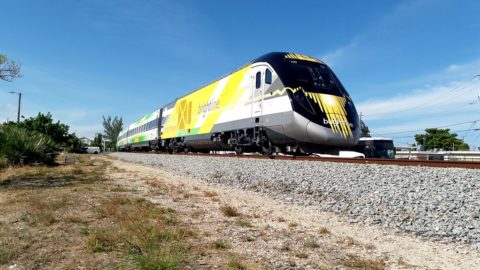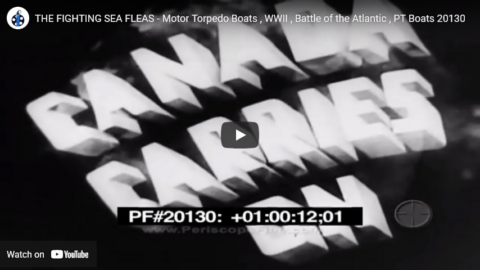World War Two
Published 19 Mar 2022The British are attacking the Mareth Line in North Africa while the Americans hit the Axis flank, but the Allies are withdrawing in Burma. It’s the Germans who are pulling back in the USSR, though, and there is another attempt from within German command to assassinate Adolf Hitler.
(more…)
March 20, 2022
Kharkov Falls Once Again – WW2 – 186 – March 19, 1943
Florida’s new passenger rail service
Thomas Walker-Werth contrasts the different experiences of California and Florida in trying to build new passenger railway services:
When the Federal Government ordered the construction of the Interstate Highway System in the 1950s and 1960s (at a cost to taxpayers of roughly $580 billion in 2022 dollars), it all but killed America’s privately operated passenger railroads. Since then, rail travel in America has mostly consisted of government-subsidized Amtrak services of deteriorating quality that amble across the country, catering to a niche market of leisure travelers and those with no other options. On the busy Northeast Corridor between Boston and Washington D.C. there is still enough demand to operate a busy, profitable service, but elsewhere Amtrak’s services are too slow, inconvenient, and infrequent to effectively compete with highways and airlines.
But with gas prices rising and traffic congestion strangling many American cities, passengers, investors, and government planners are all reconsidering railroads. Several new projects have sprung up across the country, aiming to link major cities a few hundred miles apart, where a train might provide a more convenient journey than a plane, car, or bus. Some of these projects are led by state governments, others by private companies. The contrast between the two is dramatic. To illuminate that difference, compare the government-run California High Speed Rail project with Brightline, a new private rail system in Florida.
Approved in 2008, California High Speed Rail (CHSR) was expected to deliver a 520-mile two-track, electrified high-speed railway on an all-new route between Los Angeles and San Francisco by 2029. Fourteen years later, CHSR is now only expected to have a 171-mile single-track section between Madera and Bakersfield will be operational by 2030. Meanwhile the project’s cost has ballooned to $80 billion from an original budget of $33 billion, and costs are expected to rise further to $100 billion, or triple the original budget.
Meanwhile in Florida, a very different kind of passenger railroad is already up and running. Brightline was launched in 2012 by the Florida East Coast Railway, a private freight railroad. Unlike CHSR, Brightline mostly uses existing routes, removing the need to acquire (or appropriate) large amounts of land. Instead of building the whole line before beginning any passenger services (as CHSR is doing), Brightline began construction on a 70-mile section from Miami to West Palm Beach in 2014 and opened it to passengers in 2018. This meant that Brightline already had an operational, revenue-producing service before embarking on the 170-mile northward extension to Orlando Airport. That extension is expected to open in 2023, and the entire project will cost about $1.75 billion, raised through private financing.
This equates to about $7.3 million per mile for Brightline, compared to $153.8 million per mile for CHSR (using the current $80 billion budget). Why will CHSR cost at least twenty times more per mile than Brightline? How has Brightline managed to deliver a high-speed intercity passenger rail system within ten years whereas CHSR needs twenty-two years to deliver an incomplete, scaled-down version of its original plan? Much of the answer comes down to the fundamental nature of public works projects such as CHSR.
This isn’t quite a fair apples-to-apples comparison between Brightline and CHSR, as Brightline’s services will have to interact with freight trains on conventional rails while CHSR — if ever completed — will be a separate line hosting only CHSR’s own high-speed passenger trains. Brightline’s trains will probably not have the theoretical top speed that CHSR is intended to use, as the physical plant of rail lines intended for mixed-use traffic will limit the speeds due to signalling, traffic density and braking distances of the respective types of trains.
Canada Carries On — The Fighting Sea Fleas (1944)
PeriscopeFilm
Published 24 Dec 2012Support Our Channel: https://www.patreon.com/PeriscopeFilm
World War 2 propaganda film narrated by Lorne Greene about Canadian Motor Torpedo Boats crews and their actions. Shows life aboard Motor Torpedo Boats during the Battle of the Atlantic, fending off attacks by German U-Boats and commerce raiders. Motor Torpedo Boat (MTB) was the name given to fast torpedo boats by the Royal Navy and the Royal Canadian Navy. The “Motor” in the formal designation, referring to the use of petrol engines, was to distinguish them from the majority of other naval craft that used steam turbines or reciprocating engines. Produced & Directed by Sydney Newman, and released in 1944.
This film is part of the Periscope Film LLC archive, one of the largest historic military, transportation, and aviation stock footage collections in the USA. Entirely film backed, this material is available for licensing in 24p HD. For more information visit http://www.PeriscopeFilm.com
QotD: The mythical Victorian conformity
The Victorians were and are usually derided as a society of stuffy, conformist fuddy-duddies. These are the people, we’re told, who put little doilies over piano legs, lest the sight of something vaguely resembling the naked female form get everyone in the room overheated. In reality, though, the Victorians were a wonderfully weird bunch, as tolerant as all get out. You’d find far, far more actual diversity — of thought, of opinion, of dress and manners — in a small English country village in 1881 than you can in some entire US states in 2021.
Back in my youth, the “lifestyle” sections of big newspapers and magazines were always reporting on families cleaning out granny’s attic, only to find boxes full of great-grandpa’s translation of the Poetic Edda into Spenserian sonnets. Or great-grandma’s recreation of the Bayeux Tapestry in multicolored yarn. Or what have you. Everyday, plain-jane people back then were always undertaking these massively ambitious, frankly weird projects — great-grandpa was the village parson, and so far as is known, he never left his home parish, and yet he somehow got it in his head to write a history of the Assyrian Empire … and actually did write it, hundreds if not thousands of pages of it, based only on books in the parsonage library, or that he could borrow from the local squire.
In other words, the Victorians were extremely tolerant of “eccentricity”, sometimes extreme eccentricity, the kind of thing we Postmoderns would call “off their meds”. Just because the postmaster spends his off hours trying to commune with the fey folk doesn’t mean he’s not an effective postmaster …
That‘s the kind of thing we need to encourage. What kind of world do we want? A world where, above all, we recognize that people aren’t the same. “Reason” is just a tool, and a crude tool at that. Trying to force people to live “reasonably” always ends in tyranny. What we want is actual diversity. So long as he’s not harming himself or others — and the threshold here is actual physical harm, not feelz — who cares what the postmaster gets up to on his off hours? The supposedly stuffy, rigidly conformist Victorians didn’t, because c’est la vie.
Severian, “Truly Special Snowflakes”, Rotten Chestnuts, 2021-09-02.





